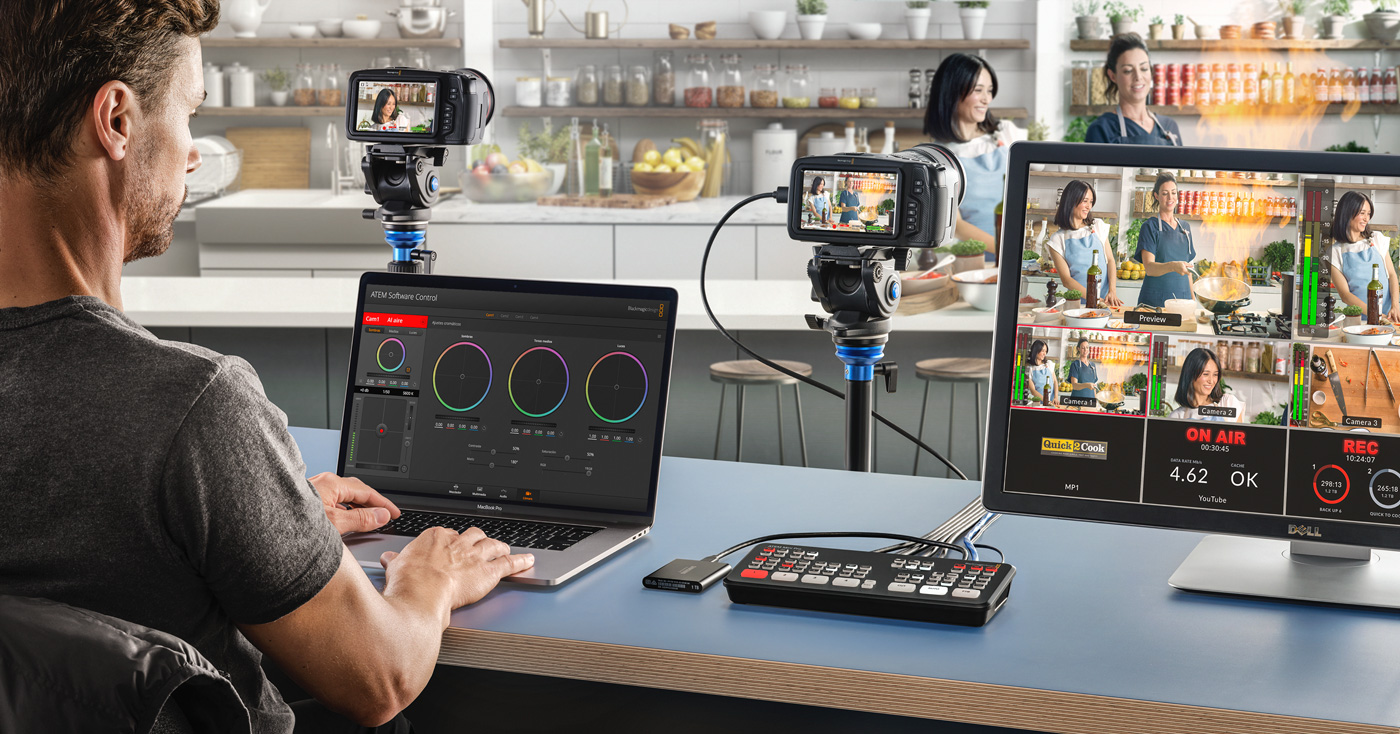
With businesses being more active online to gain customer attention, streaming has risen in popularity. Videos help build customer relationships and trust, leading to a more engaged customer base. Likewise, video is used internally for training sessions, introducing new campaigns, or providing employees with company updates.
Live streaming pairs the benefits of video with instant content, which can be shared across social media platforms, video-sharing channels, and company web pages simultaneously. This allows viewers to instantly respond to the content with real-time comment streams or emoji buttons, creating an engaged connection between the viewers and streamer.
Why Is Live Stream Quality Important?
Some pet peeves can dramatically affect the audience engaging with your content. Buffering, pixelated images, or delays can all lead to viewers tuning out, which has implications for your business that are similar to those damaging effects of shopping cart abandonment. This reduces the positive impact of your content, regardless of the information contained.
Sixty-seven percent of viewers say video quality is the most important factor when watching a live stream, so when using video to market, communicate, or engage audiences, it can’t be ignored. This can appear daunting and technical, but taking the 10 steps below is well worth the effort.
Ten Tips for Improving Live Stream Quality
There are many aspects that can change the quality of your live video stream. Having the correct settings and providing quality streams is easy to do, making the viewing experience more enjoyable for your audience. Following these tips can also make the experience less frustrating for those broadcasting, helping connections run effectively and efficiently.
1. Use Quality Equipment
It shouldn’t be a shock that cheap cameras and microphones produce cheap results. Those built into computers may work well for video calls or business communications. But if you’re looking to present professional live streams, you’re going to need to invest in some quality equipment to instantly improve your live stream results.
The best live streaming cameras capture focused, high-resolution videos without any lag. Likewise, a decent microphone can eliminate background noise and pick up clear sound. Different options suit different uses, and the equipment used for live streaming music concerts will likely be different from that needed for integrating live streaming technology into your contact center solutions.
2. Check Your Lighting Setup
A fairly common issue for those new to live streaming is low light levels, which makes it difficult for viewers to watch. This can be the result of cameras not working as well in low light levels, meaning what seems like plenty of light in real life doesn’t translate to what’s seen on screen.
Use a well-lit room for streaming, either with enough natural light or by using lights to illuminate the subject of the live stream. Even if it seems light in the room, constantly refer to how this lighting comes across on screen and adjust accordingly, making sure the subject is evenly lit.
3. Find the Right Video Platform
Decide where you want to be sharing your live stream. Most social media platforms support live streaming, but functionality and monetization are often limited. Businesses looking for a professional solution that offers full brand control will be better off with an enterprise video platform or service. These streaming services may ensure better quality and additional customization. What’s more, they can be used to multistream to several different destinations at once, such as YouTube, Facebook, or a website.
Make sure the streaming destination selected for your broadcast is somewhere that your target audience can easily access rather than an overly complex interface. Check the ways that the viewers can interact with the content, from adding real-time comments, reactions, or even joining the video stream, and ensure these add to your audience experience.
4. Limit the Number of Open Applications
If your computer is trying to do a million things at once, it’s likely to run slowly and compromise stream quality. Computers only have a limited amount of CPU, and having multiple programs on the go can use it up, resulting in buffering live streams, pixelated images, and delayed audio.
Ensure the only other things open on your computer are essential to your live stream. Close unnecessary tabs and browsers, or move essential processes, such as call center applications, to another device so that your stream isn’t competing for computer resources. This opens up CPU space to focus on the actions needed to stream your video quicker and to a higher quality.
5. Use High-Speed Internet Connections
Your internet connection is central to uploading and streaming your content, as well as hosting the users watching your live stream. Low internet speeds can lead to stream buffering or frozen videos, which often equates to lost viewers and less engagement. It can also prevent larger audiences from all tuning in simultaneously.
You can check your internet speed online to find your upload and download speeds. To improve them, look at alternative internet service providers (ISP) that provide better internet speeds in your area. Internet speeds can also be affected by how close your live stream setup is to your router and the Wi-Fi strength.
6. Connect With an Ethernet Cable
Instead of connecting to Wi-Fi, using an Ethernet cable can help with the stability of your internet connection. This transmits your internet signal directly to your computer through a cable instead of sending it through the air in radio waves, like Wi-Fi. Regardless of your proximity to an internet router, you will be connected to your internet network.
When it comes to live streams, Ethernet cables ensure that your connection won’t drop out in the middle, even if others in the vicinity start using the network for other purposes. This can be especially useful when streaming from an office where others are using the same on-premises system or in spaces where Wi-Fi is unreliable.
7. Look at the Video Bitrate
Your live stream bitrate tells you how much information is transmitted online every second. A higher bitrate transmits more pixels and information at a higher speed. Internet speeds and video size can both affect your transmission speed.
Adaptive bitrate streaming allows you to use more than one bitrate to transmit multiple streams, preventing stalling for viewers with different internet bandwidths. Even if viewer’s networks have particularly slow internet speeds, additional bitrate streams enable a lower quality but fully functional live stream to still be streamed and interacted with.
8. Stick to Streaming Platform Guidelines
Different streaming platforms also have limits to the quality of content and the bitrate at which they can stream. Attempting to stream a video of higher quality than supported by a given social media site will result in no visible improvement for your audience, while potentially taking longer to stream and causing more buffering due to the large quantity of information being transmitted.
Instead, look up your destination’s streaming guidelines and find out the settings they suggest for high-quality streaming. Use these to inform your setup, working out what combination of settings creates the best live stream video while avoiding delays and buffering. This may require adjustments to your video resolution or the size of your live stream.
9. Adjust Your Encoder Settings
When live streaming, your video content is compressed by an encoder to match your settings, affecting your video resolution, bitrate, and size. Adjusting your encoder can improve a variety of aspects of your live stream by optimizing the settings for your use case. It can take some trial and error to identify the right setting for you, but here’s a good place to start.
Your live stream needs to be encoded in a size and format that viewers with a range of internet connections can access, which is why most professional streaming workflows leverage a transcoding solution that supports adaptive streaming.
10. Complete a Test Run
For a flawless live stream, you’re going to have to practice beforehand to make sure everything is set up correctly. Often, it’s not until you can see all the equipment, settings, and connections working together that you notice obvious oversights. This should include checking your streaming quality and how the result appears to viewers.
